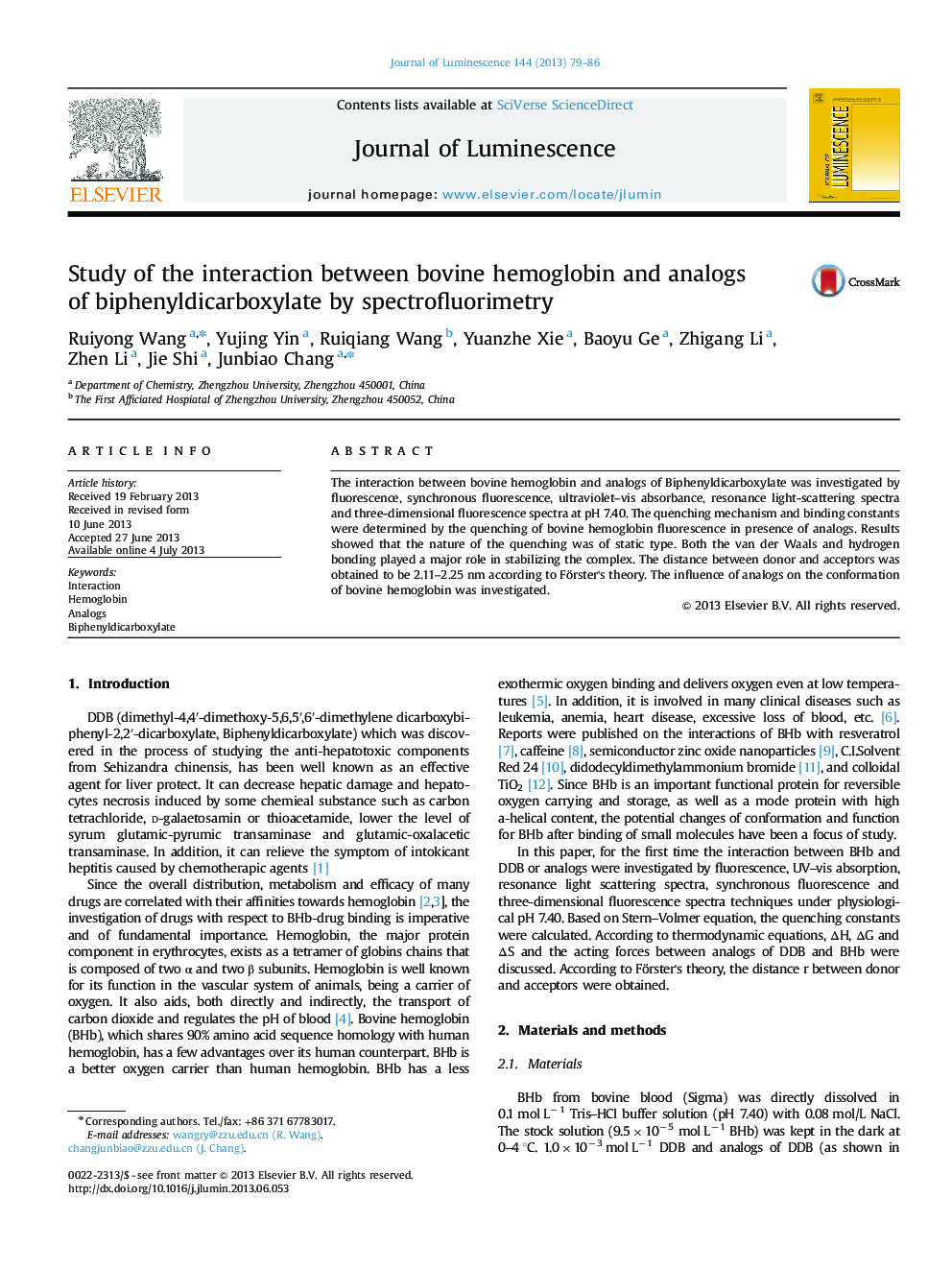| Article ID | Journal | Published Year | Pages | File Type |
|---|---|---|---|---|
| 5400600 | Journal of Luminescence | 2013 | 8 Pages |
Abstract
The interaction between bovine hemoglobin and analogs of Biphenyldicarboxylate was investigated by fluorescence, synchronous fluorescence, ultraviolet-vis absorbance, resonance light-scattering spectra and three-dimensional fluorescence spectra at pH 7.40. The quenching mechanism and binding constants were determined by the quenching of bovine hemoglobin fluorescence in presence of analogs. Results showed that the nature of the quenching was of static type. Both the van der Waals and hydrogen bonding played a major role in stabilizing the complex. The distance between donor and acceptors was obtained to be 2.11-2.25Â nm according to Förster's theory. The influence of analogs on the conformation of bovine hemoglobin was investigated.
Related Topics
Physical Sciences and Engineering
Chemistry
Physical and Theoretical Chemistry
Authors
Ruiyong Wang, Yujing Yin, Ruiqiang Wang, Yuanzhe Xie, Baoyu Ge, Zhigang Li, Zhen Li, Jie Shi, Junbiao Chang,
